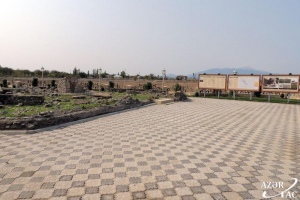


Archaeologists from the Department of Ancient Affairs of Israel found a cistern for collecting rainwater, built in the late VIII - early VII century BC, in the era of Assyrian domination.
The facility is located near the city of Rosh Haayin in the Central District of Israel. The underground cistern, finished with a stone, has a height of more than four meters and a length of about 20 meters. According to scientists, it was completely filled with water during the rains in the winter. In the adjacent rooms on the floor were found fragments of vessels that supposedly served to take water. On the walls at the entrance archeologists found carved on stone human figures, crosses and plant patterns. Scientists believe that they were made by random visitors of this place in later ages. In recent years, in the vicinity of Rosh-ha-Ain, archaeologists have found the remains of several rural estates. "They were probably built after the destruction of the kingdom of Israel in 720 BC, when the Assyrian empire dominated the region," says the leader of the excavations, Gilad Itach. - The creation of estates in this area is very interesting, given the fact that many areas of the kingdom of Israel at that time were in desolation. Some scholars believe that the creation of estates was motivated by the desire of the Assyrians to master this area, which lay on the international trade route and near the western border of their empire. The structure discovered in the current excavations differs from most of the previously discovered estates. Its orderly plan, a vast area, powerful walls and an impressive water cistern carved beneath it indicate that this object was of an administrative nature and, perhaps, it controlled the surrounding estates. "














